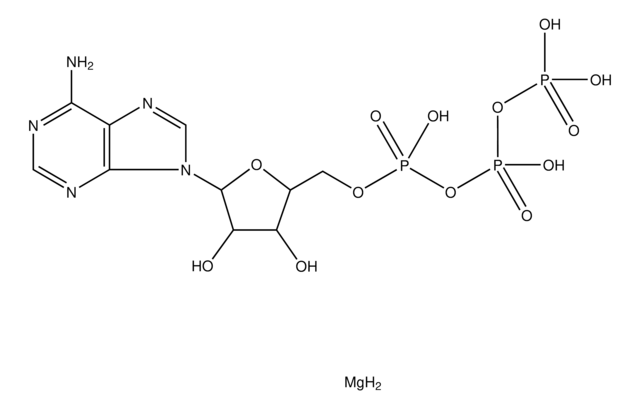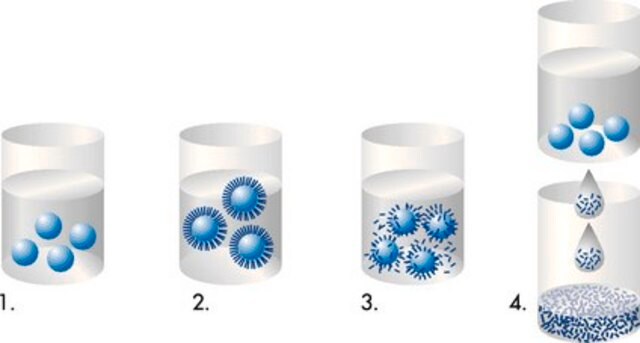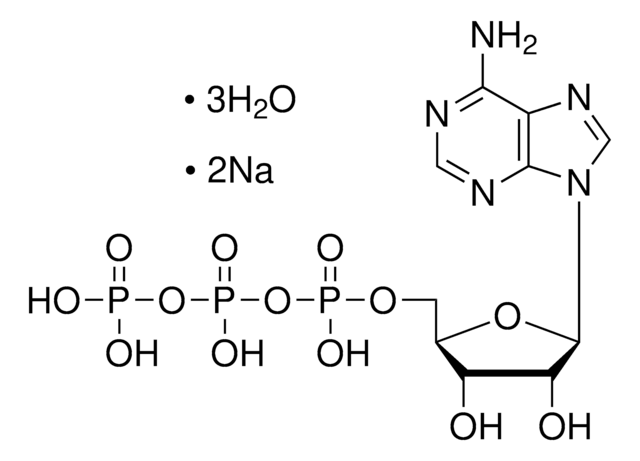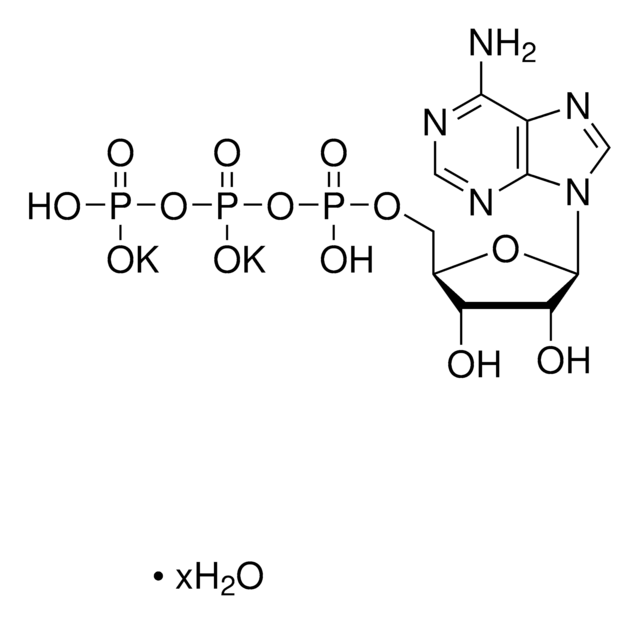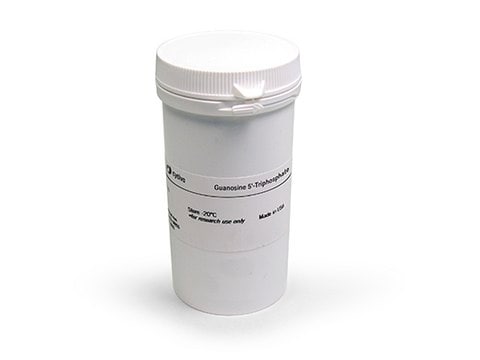A2383
Adenosine 5′-triphosphate disodium salt hydrate
Grade I, ≥99%, from microbial
Synonym(s):
ATP disodium salt
About This Item
Recommended Products
biological source
microbial
Quality Level
type
Grade I
Assay
≥99%
form
powder
solubility
H2O: 50 mg/mL
storage temp.
−20°C
SMILES string
O.[Na+].[Na+].Nc1ncnc2n(cnc12)[C@@H]3O[C@H](COP(O)(=O)OP([O-])(=O)OP(O)([O-])=O)[C@@H](O)[C@H]3O
InChI
1S/C10H16N5O13P3.2Na.H2O/c11-8-5-9(13-2-12-8)15(3-14-5)10-7(17)6(16)4(26-10)1-25-30(21,22)28-31(23,24)27-29(18,19)20;;;/h2-4,6-7,10,16-17H,1H2,(H,21,22)(H,23,24)(H2,11,12,13)(H2,18,19,20);;;1H2/q;2*+1;/p-2/t4-,6-,7-,10-;;;/m1.../s1
InChI key
NTBQNWBHIXNPRU-MSQVLRTGSA-L
Looking for similar products? Visit Product Comparison Guide
Application
- to prepare adenosine triphosphate (ATP) standard solutions to determine ATP levels in various bacterial cultures
- bone marrow-derived macrophages (BMDM) treatment
- as a preparation free of contaminating guanine nucleotides to study the binding effects of coatomer β subunit (β-COP)
Biochem/physiol Actions
Storage Class Code
11 - Combustible Solids
WGK
WGK 2
Flash Point(F)
Not applicable
Flash Point(C)
Not applicable
Personal Protective Equipment
Choose from one of the most recent versions:
Certificates of Analysis (COA)
Don't see the Right Version?
If you require a particular version, you can look up a specific certificate by the Lot or Batch number.
Already Own This Product?
Find documentation for the products that you have recently purchased in the Document Library.
Customers Also Viewed
Articles
Separation of AMP (adenosine monophosphate); ATP (adenosine triphosphate)
Learn about the four membrane-bound protein complexes that make up the electron transport chain metabolic pathway supplying energy as ATP for cellular respiration.
Get to know the Tricarboxylic acid (TCA) cycle to better inform your research in biochemistry, metabolomics, or related fields concerned with this metabolic pathway and its enzymes, by-products, or intermediates.
Protocols
Enzymatic Assay and ATP Sensitivity Test of Luciferase
Enzymatic Assay of Hexokinase
Enzymatic assay of lipase type XIII from Pseudomonas sp. using a coupled enzyme system of glycerol kinase and glycerophosphate oxidase (EC 3.1.1.3)
Separation of Adenosine 5′-triphosphate disodium salt hydrate, BioXtra, ≥99% (HPLC), from microbial; Adenosine 5′-diphosphate sodium salt, bacterial, ≥95% (HPLC); 2′-Deoxyadenosine 5′-monophosphate, Sigma Grade, 98-100%
Our team of scientists has experience in all areas of research including Life Science, Material Science, Chemical Synthesis, Chromatography, Analytical and many others.
Contact Technical Service
